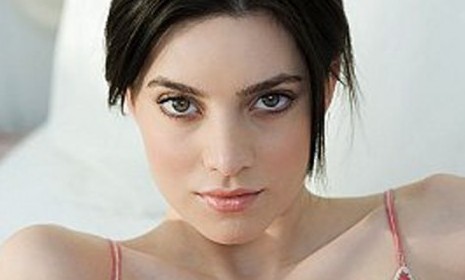Do ovulating women buy sexier clothing?
Yes, according to University of Minnesota marketing researchers, who say that women at their most fertile unconsciously opt for clingy styles

In the mating dance, men often have trouble reading women's signals. But marketing researchers from the University of Minnesota claim that ovulating women send clues — some subtle, some not so subtle — about the state of their hormones by what they buy and wear. Here's a quick guide:
What are the main signals women send?
The researchers report that women tend to choose sexier outfits when they're at their most fertile. So for you "Mad Men" fans, says Judy McGuire in Seattle Weekly, that means that if your Peggy Olson suddenly "morphs into a va-va-va-voom Joan Holloway" for a few days, chances are she's ovulating.
The Week
Escape your echo chamber. Get the facts behind the news, plus analysis from multiple perspectives.

Sign up for The Week's Free Newsletters
From our morning news briefing to a weekly Good News Newsletter, get the best of The Week delivered directly to your inbox.
From our morning news briefing to a weekly Good News Newsletter, get the best of The Week delivered directly to your inbox.
How did researchers reach that conclusion?
They asked 100 women at different stages in their menstrual cycles to choose what clothes and accessories they would like to buy. Those in their most fertile phases opted for tighter sweaters, slinkier dresses, and lower-cut tops.
Is more alluring clothing the only giveaway purchase?
No, says Kristina Durante, a post-doctoral fellow at the University of Minnesota's business school and lead author of the research, which was published in the Journal of Consumer Research. For five or six days a month, she says, women are more likely to splurge on a range of products and services designed to enhance their physical appearance — from cosmetics and health supplements to elective medical procedures.
A free daily email with the biggest news stories of the day – and the best features from TheWeek.com
What's behind this consumer reaction?
Durante concluded that a "desire to outdo attractive rival women" was one factor. Researchers showed some of the ovulating women photos of beautiful local women. Other research subjects were shown pictures of less attractive local women, or ones who lived more than 1,000 miles away. Those shown pictures of potential local rivals selected the sexiest clothes. "If you look more desirable than your competition," Durante says, "you are more likely to stand out."
Why is a business school studying this?
To help companies target women more deviously. If they could figure it out, says Durante, marketers would be well-advised to "strategically time their mailings, coupons, electronic solicitations, and direct requests to the specific window when women are ovulating." Don't you dare, says the Seattle Weekly's McGuire. If I were to discover that some website was "sending me offers for discount designer booty shorts because their computer program determined my lady parts were in baby-making mode, I'd be furious."
Sources: Fox News, BBC, Seattle Weekly, Daily Mail


